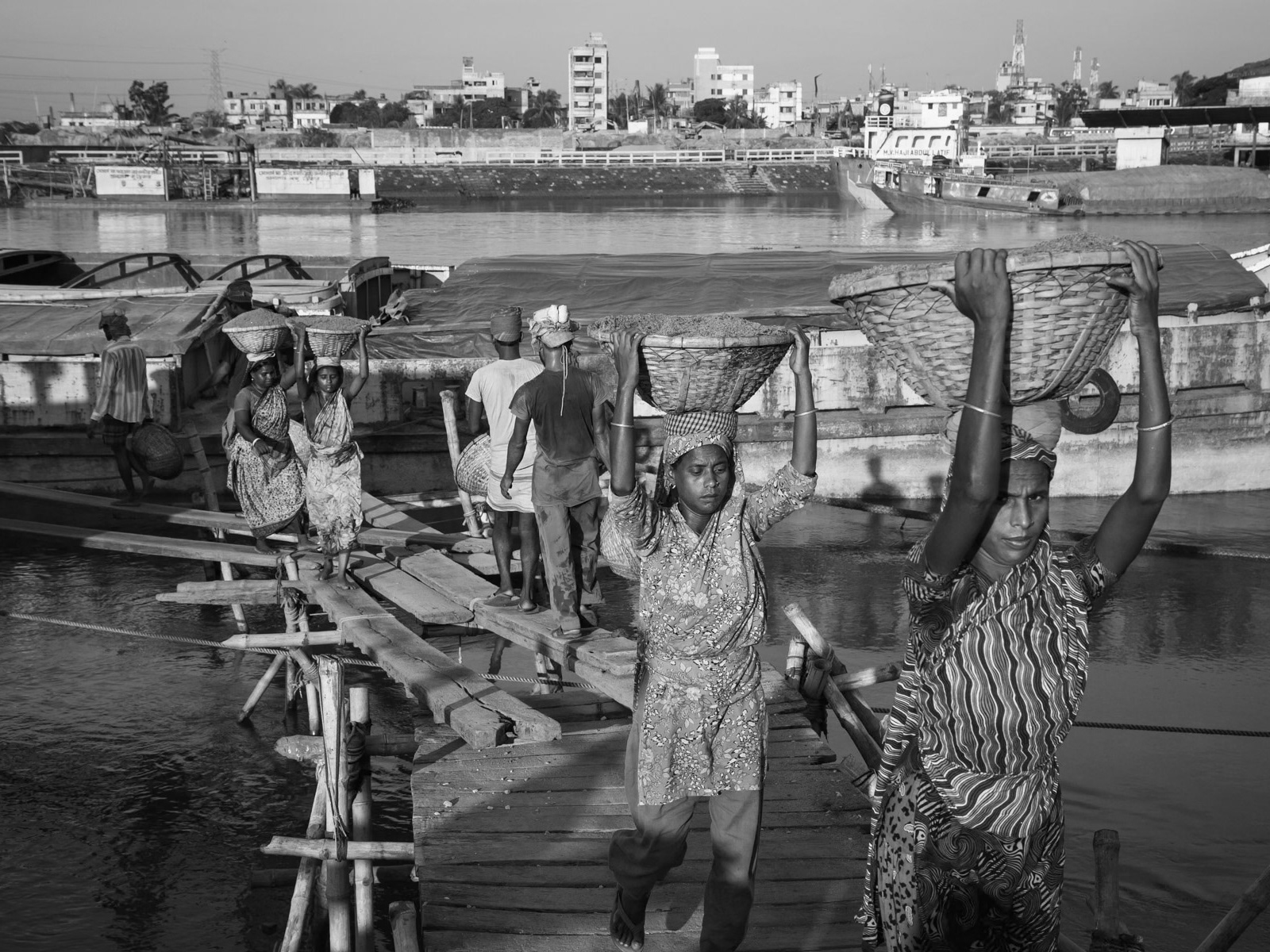The Human and Environmental Toll of Bangladesh’s Construction Boom
Bangladesh’s construction boom has fueled an insatiable demand for sand and gravel, creating an acute shortage of these crucial building materials. To meet this demand, the Himalayan rivers in the country's north are relentlessly mined for their high-quality stones, particularly during the dry season. The stones are crushed into gravel, a backbone of the construction sector.
Tamabil and Bholaganj, prominent riverine sites, witness an influx of thousands of migrant workers and their families. Men, women, and even children labor under extreme conditions, extracting and carrying stones by hand. Their grueling work forms the unseen foundation of the country’s urban expansion. Yet, their plight extends beyond physical hardship; the work is dangerous, poorly remunerated, and perpetuates cycles of poverty.
During the wet season, stone extraction continues, albeit underwater. Workers dive into rain-swollen rivers, risking their lives to retrieve stones from the depths. This year-round operation magnifies the environmental impact. Constant dredging disrupts river ecosystems, alters water courses, and erodes riverbanks, exacerbating flooding risks and undermining biodiversity.
The human and environmental costs of this frantic exploitation are monumental. While the construction boom symbolizes progress, it also underscores the need for sustainable practices and fair labor conditions. Without intervention, Bangladesh risks sacrificing its rivers and the dignity of its workers for fleeting economic gains.

Subject of a frantic construction boom, Bangladesh is in acute shortage of sand and gravel for building purposes. The Himalayan rivers in the north of the country are being dug up during the dry season for their quality stones that will be crushed into gravel for the construction sector. Thousand of migrant workers converge to Tamabil and Bholaganj with their entire families to extract and carry stones by hand. This is the story of these women, children and men working relentlessly in extreme conditions. Stone diggers, Jaflong, Bangladesh, December 2015

Diver fetching stones at a depth 4 to 8m in the Goyain river near Tamabil, Bangladesh, May 2016

Women carrying stones, Jaflon, Bangladesh, December 2015

Stone crushers, Jaflong, Bangladesh, May 2016
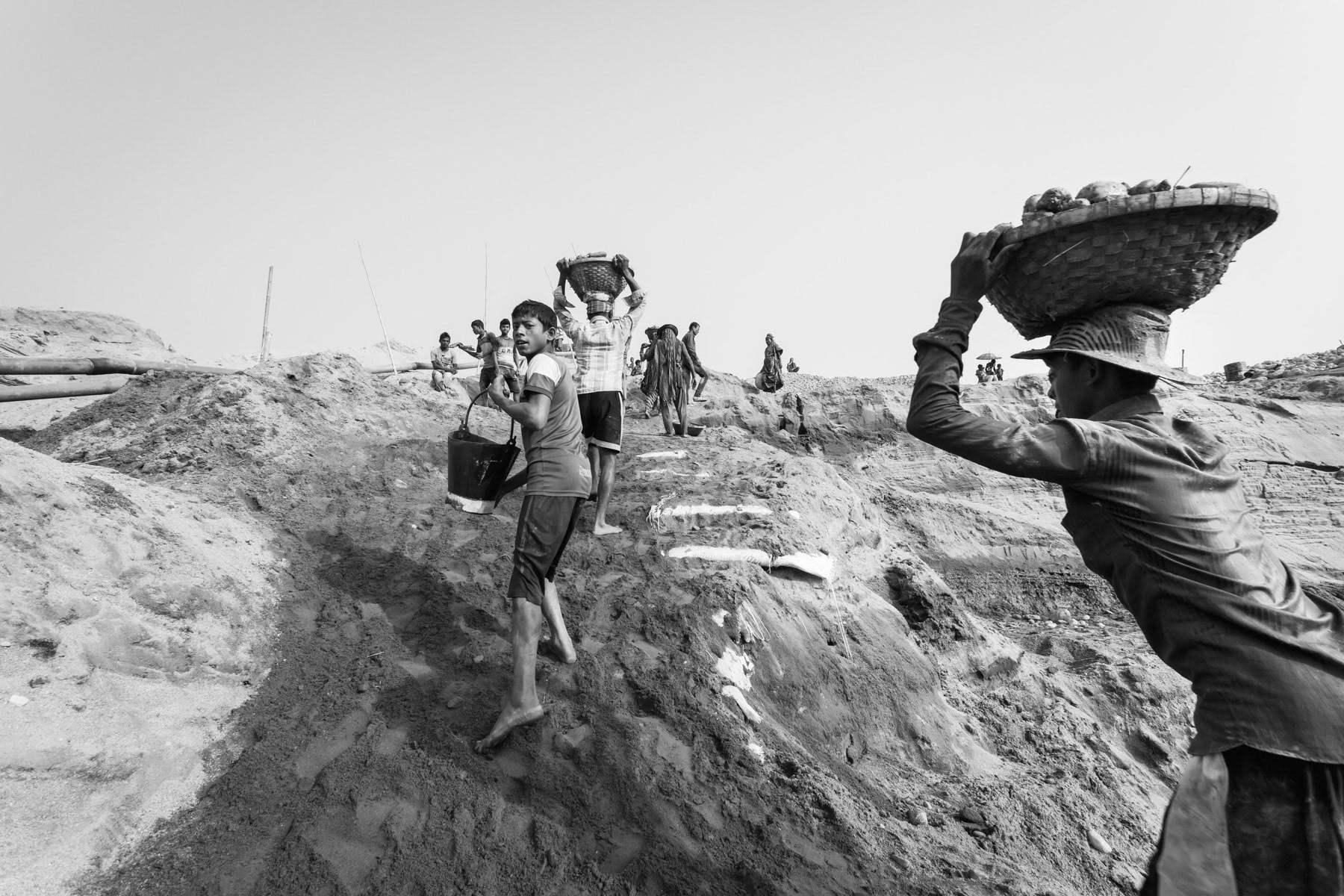
Seasonal migramt workers extracting stones from the river bed during the dry season, Tamabil in Bangladesh, December 2015

Goyain riverbed where stones for the contruction sector are being extracted, Jaflong, Bangladesh, December 2015

Stone diggers, Jaflong, Bangladesh, December 2015

Diver fetching stones at a depth 4 to 8m in the Goyain river near Tamabil, Bangladesh, May 2016

Stone divers sorting stones that will later be used to supply the booming construction sector. Goyain river in Jaflong, Bangladesh, May 2016

Stone diggers, Jaflong in northern Bangladesh, December 2015
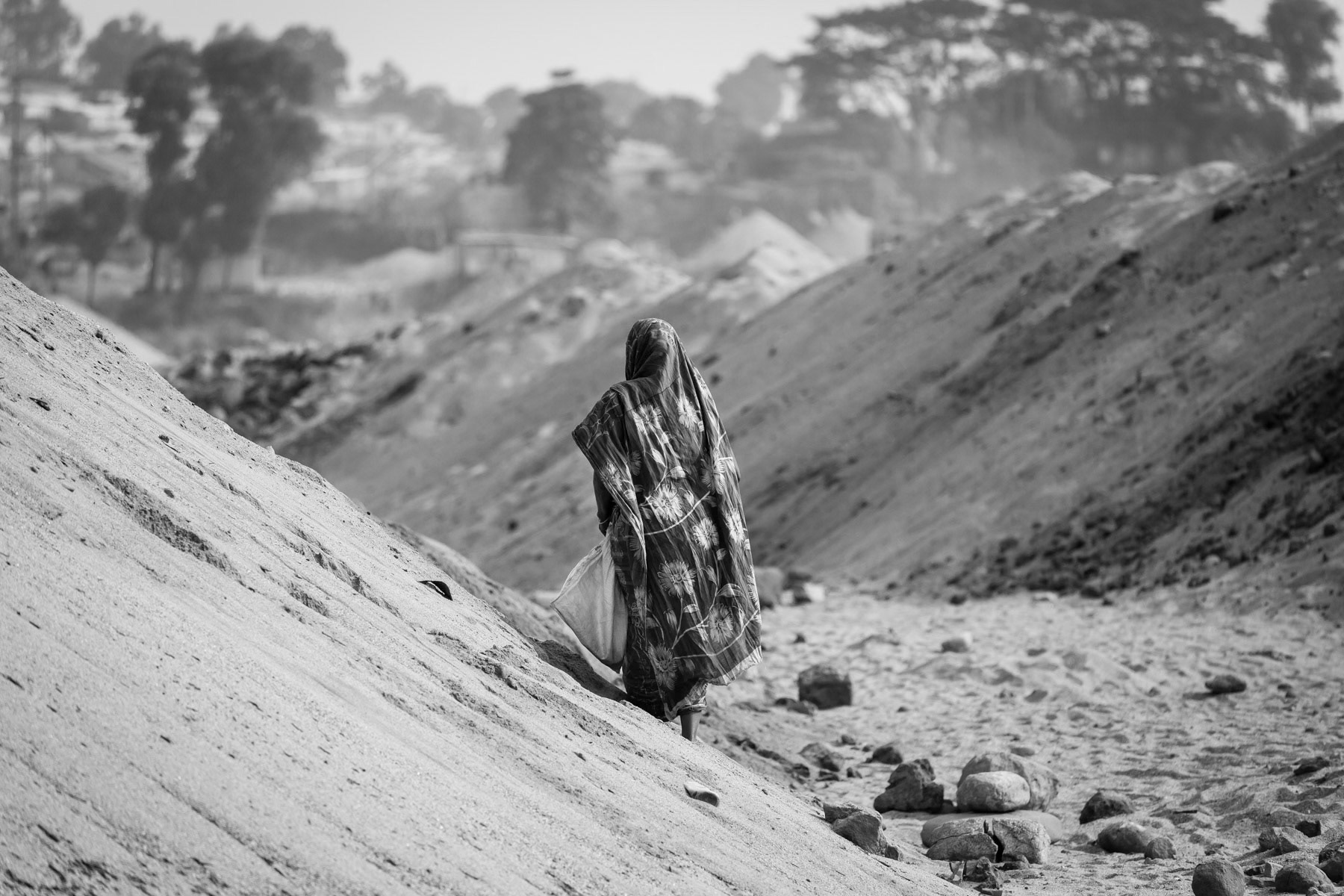
Stone digger in the Goyain riverbed, Jaflong, December 2015

Stone divers sorting stones that will later be used to supply the booming construction sector. Dholai river in Bholaganj, Bangladesh, May 2016

Stones being carried away to the crushing plant, Jaflong, Bangladesh, December 2015

Manually extracting stones from the riverbed, Tamabil, Bangladesh, December 2015

Stone diggers, Jaflong, Bangladesh, December 2015
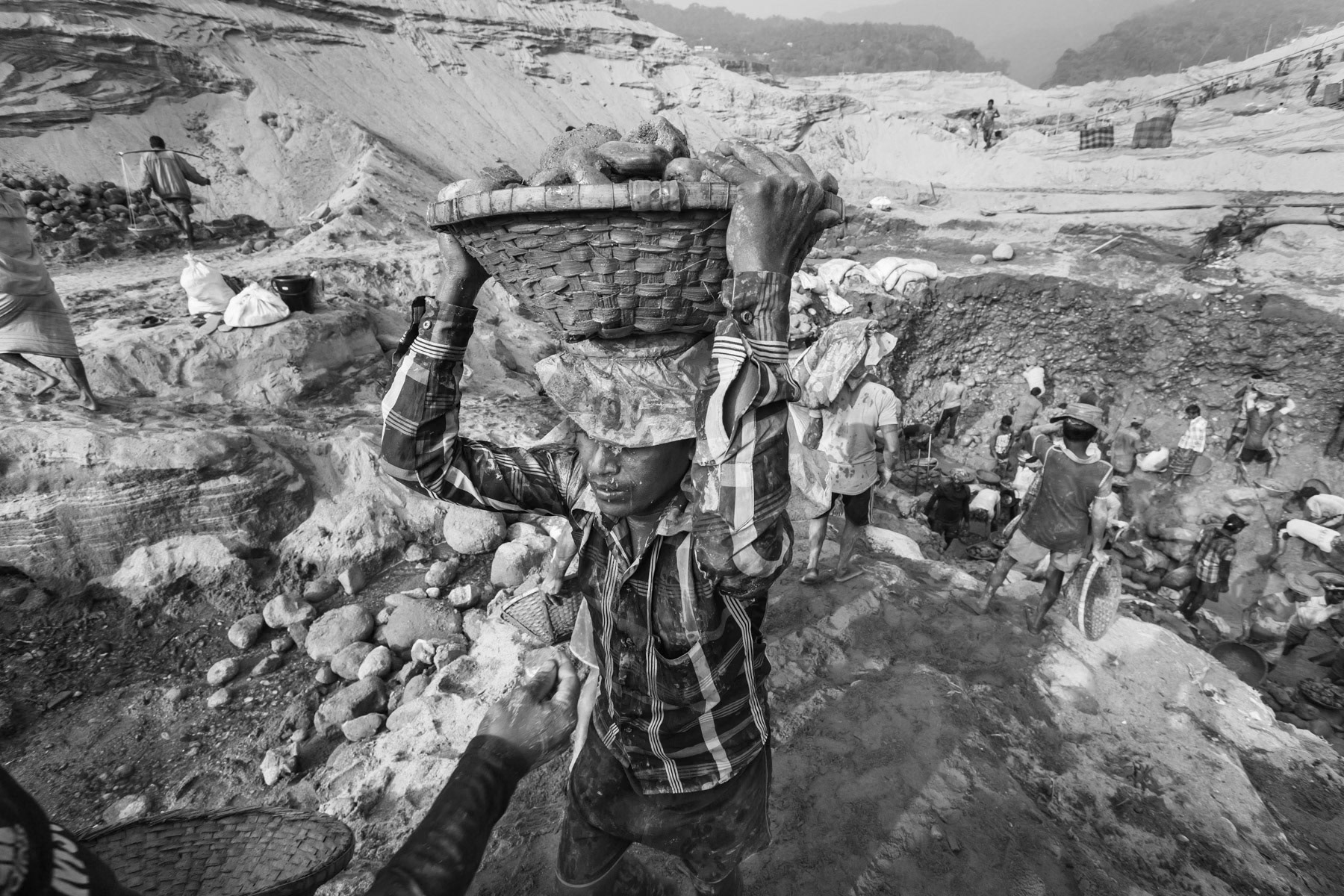
Seasonal migramt workers extracting stones from the river bed during the dry season, Tamabil in Bangladesh, December 2015

Seasonal migramt workers extracting stones from the river bed during the dry season, Tamabil in Bangladesh, December 2015

Stone carriers, Bholaganj along the Dholai river in Northern Bangladesh, December 2015
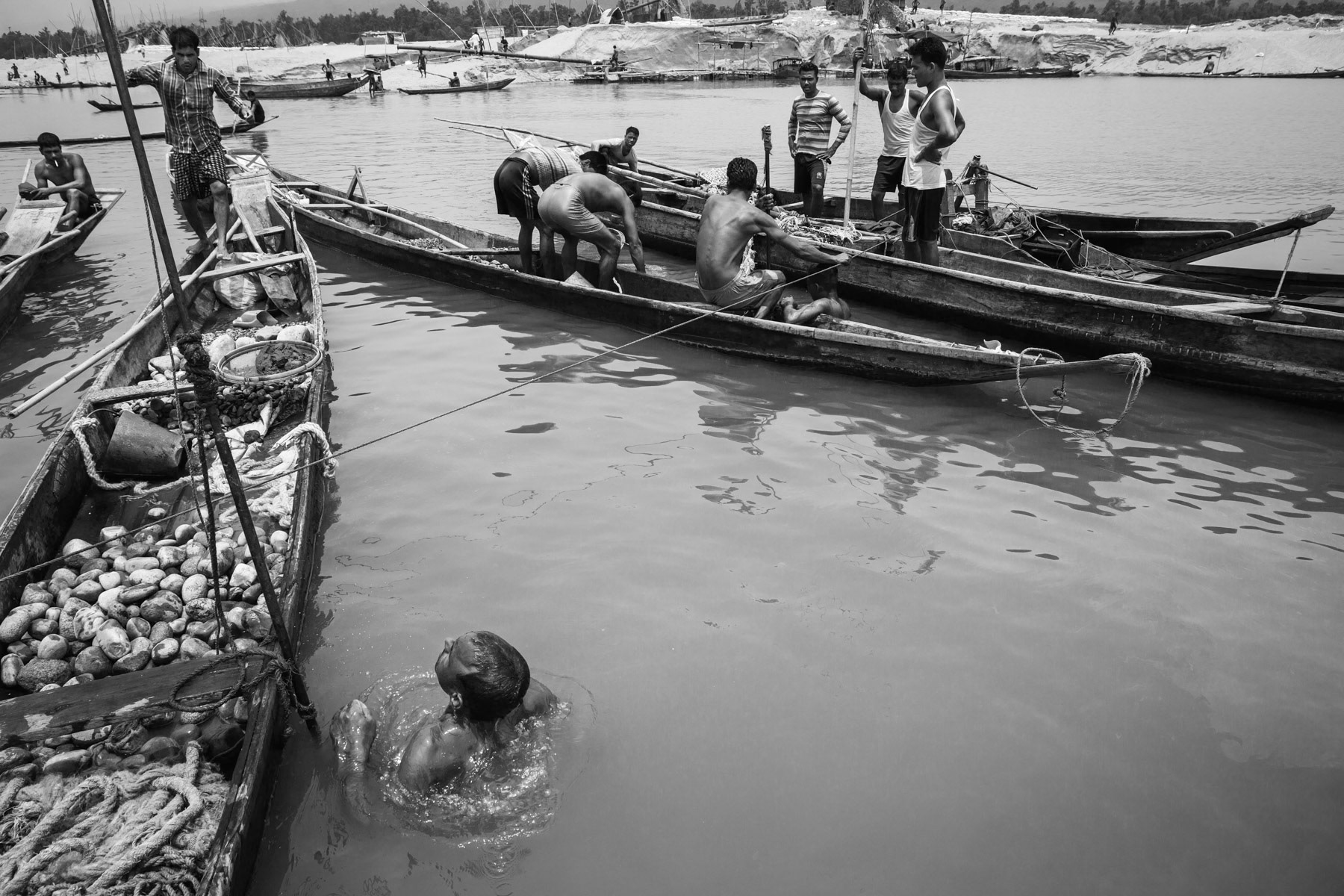
Diver fetching stones at a depth 4 to 8m in the Goyain river near Tamabil, Bangladesh, May 2016

Stone diggers, Jaflong, Bangladesh, December 2015

Child collecting stones in Goyain river bed, Jaflong in Bangladesh, December 2015

Stone diggers, Jaflong, Bangladesh, December 2015

Stones being carried away to the crushing plant, Jaflong, Bangladesh, December 2015

Seasonal migramt workers extracting stones from the river bed during the dry season, Tamabil in Bangladesh, December 2015

Boats used to move extracted stones down the river, Bholaganj, Bangladesh, December 2015

Stone carriers under an extraction pump in the Dholai river in Bholaganj, Bangladesh, December 2015

Stone diggers, Jaflong, Bangladesh, May 2016

Stone crushers, Jaflong, Bangladesh, May 2016








